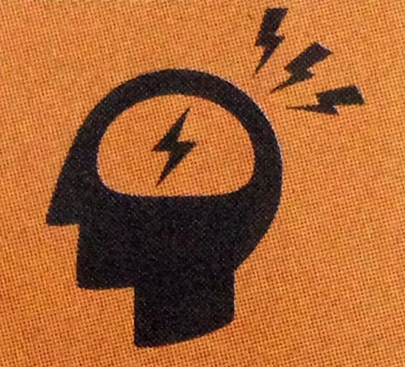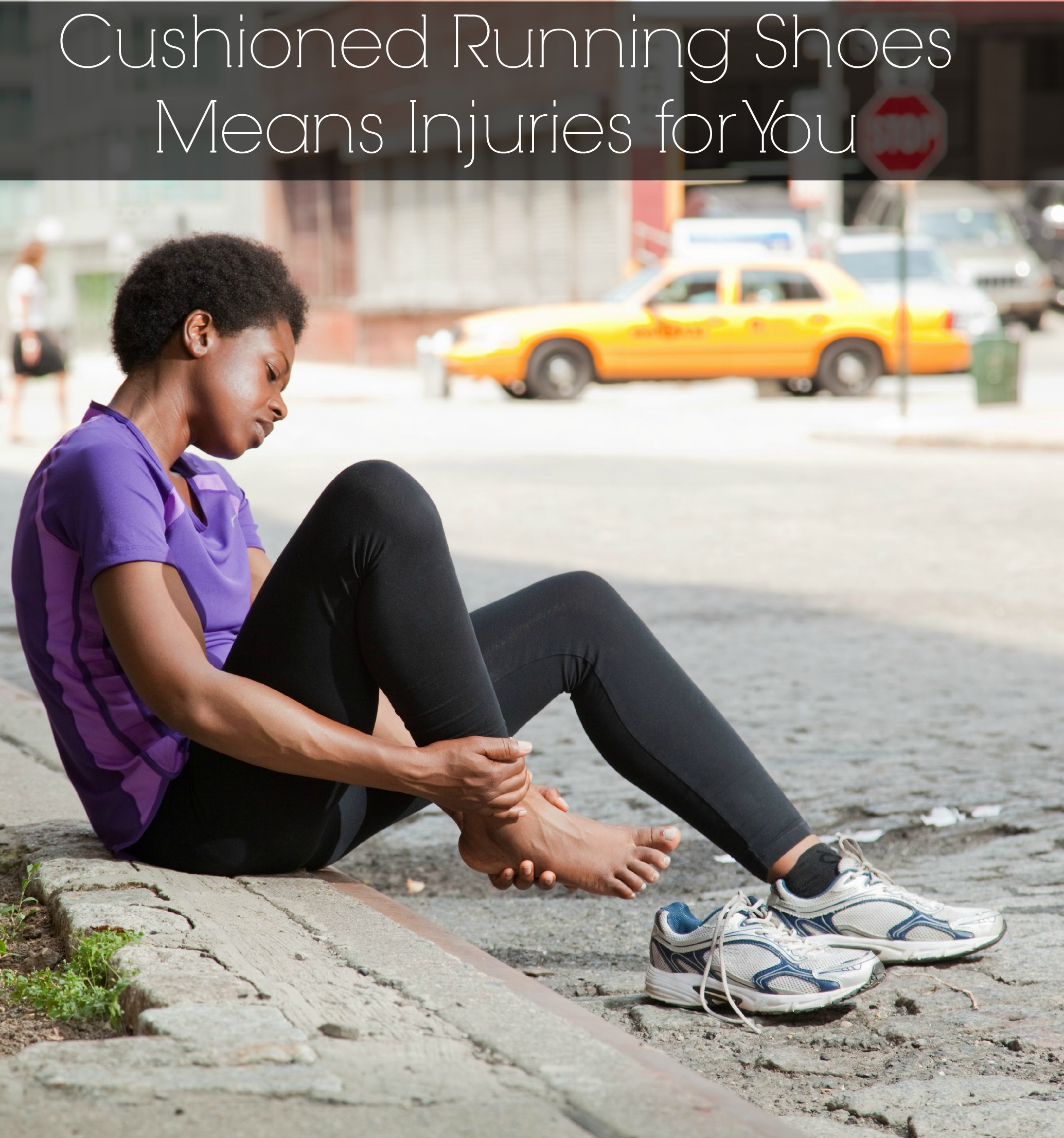Lots of injuries for you if you choose to learn forefoot running in a cushioned running shoe as these shoes mentally weaken your defense against injurious footfalls during running.
Cushioned Running Shoes Means Injuries for You
It’s hard to monitor your foot strike when you can’t feel the ground. To improve the lines of control for proper footfalls during running, certain areas of the brain carefully analyze perceptual features of the plantar surface. The best way to gain a clear sense of the ground and to optimize neuromuscular control is by running barefoot or in barefoot-like footwear. Conversely, thick cushioned outsoles interferes with perceptual awareness, resulting in a forceful footfall.

Because thick cushioning makes it hard for the brain to analyze footfall behavior, forefoot running amateurs who wear thick cushioned running shoes struggle to use their intuition in attempt to land properly and safely on the forefoot.
- Cushioned running shoes reduce proprioception, causing the brain to be less reliable and less prominently activated when an amateur forefoot runner attempts to land correctly on their forefoot.
As a result, the runner takes on too much body impact and loading which corresponds to a higher risk of injury.
Flat Footwear or Barefoot Influences the Correct Moves
Barefoot or minimalist running are truly unprecedented for allowing you to land forefooted safely. This is because the proprioceptors in the feet receive massive input from the ground which trigger automatic behaviors that improve impact-reducing mechanical strategies.
Pure minimalist running shoes and running barefoot enables a runner to deliberately sense the ground to optimize the best footfall solution. Over-time, this footfall pattern becomes learned, allowing the runner to land appropriately without conscious thought.
Wearing less is really the only solution to the central challenge in running: landing properly, with less impact. Thin, flat running shoes give rise to conscious sensations that allows for fast, automatic safe footfalls to materialize all of a sudden. Cushioned running shoes on the other hand, depresses excitable matter on the foot thereby preventing the output of unconscious processing into awareness.
More From Run Forefoot:
Best Trail Running Shoes for Forefoot Strikers
What Are The Common Running Injuries
Link Between Heel Strike Running and Lower Back Pain
Minimalist Running is good, BUT..
Bretta Riches
BSc Neurobiology; MSc Biomechanics candidate, ultra minimalist runner & founder of RunForefoot. I was a heel striker, always injured. I was inspired by the great Tirunesh Dibaba to try forefoot running. Now, I'm injury free. This is why I launched Run Forefoot, to advocate the health & performance benefits of forefoot running and to raise awareness on the dangers of heel striking, because the world needs to know.
Latest posts by Bretta Riches (see all)
- Heel Strike Running Causes Slipped Discs - 25/04/2024
- How to Train Yourself to Not Heel Strike When Running - 24/04/2024
- Cushioned Running Shoes Found to Be Bad for Ankles - 23/04/2024


Leave a Reply